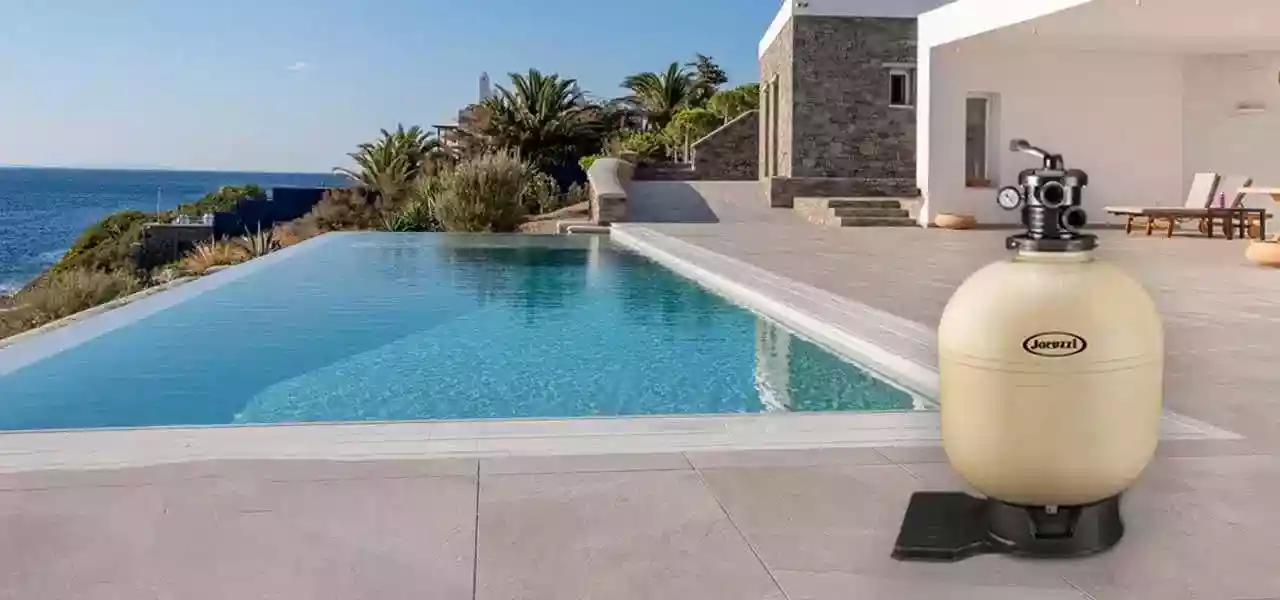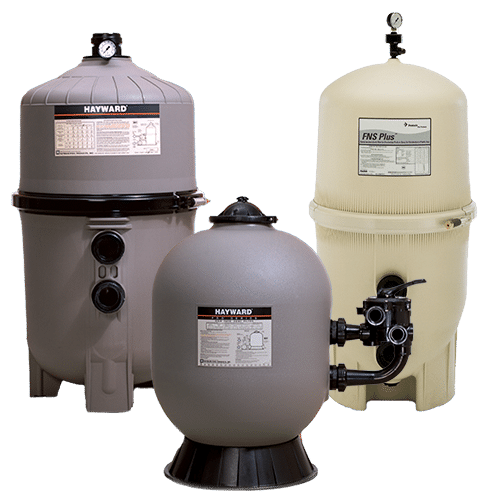FREE Standard Shipping On All Orders $100 or More!*

How to Size a Pool Filter
Correctly sizing your pool equipment is key to ensuring a high-functioning system. Purchasing an incorrectly sized filter can lead to numerous issues down the road for your pool. Understanding how pool filter size works will help you pick the right one and keep your pool clean and working in tip top shape.
Go Big or Go Home
While choosing a pool filter size that is an exact match to the rest of your equipment is not wrong, purchasing a slightly larger filter size is not a bad idea. A larger filter size can be more efficient and powerful than the actual size your pool needs. Additionally, it can offer these benefits:
- Longer filter cycles, or time between backwashing
- Less bypass of fine particles
- Greater filtration of pool water
- Faster pool water cleanup
- Longer-lasting filter medium
Residential Pool Filter Sizes

Filters are commonly sized by the square footage of surface area. The more square feet of filter medium you have, the better the filter performance will be. But it gets tricky when you try to compare the three different types of pool filters to each other. That's because they all trap dirt and debris in different ways. Don't let this confuse you, though. Within each filter type, there are typically four or five sizes.
Of these sizes, the smallest are suitable for aboveground pools, the mid-range ones can be used for small pools around 15,000 gallons, and the big filters work best for pools above 25,000 gallons. Adding to the confusion are the turnover rates listed by manufacturers for their pool filters. These rates typically appear on product information pages, outlining the maximum flow rates for the filters.
Sand Filters
For sand filters on in-ground pools, we recommend a 30-inch tank diameter, which has a 4.9 sq. ft. filter surface area and holds 600 pounds of sand. For small pools (under 20,000 gallons), the next size down, a 24" tank, is great if the budget is tight. But never go smaller than this for an in-ground pool.
Cartridge Filters
A good rule of thumb for cartridge pool filters is: 100 sq. ft. of filter surface area per 10,000 gallons of pool water, as a minimum. The 400 sq. ft. cartridge filters work great for inground pools above 25,000 gallons. These filters can go an entire season without cleaning in most cases!
D.E. Filters
Because Diatomaceous Earth (D.E.) filters offer the most superior type of filtration, people tend to go small and buy a 24 or 36 sq. ft. D.E. filter. However, we recommend not using anything below a 48 sq. ft. filter. If your pool is over 25,000 gallons, go with the big option — the 60 sq. ft. filter.
For the average in-ground pool, if money is available, buy a big D.E. filter and be done with it. If you have a tight budget this year, opt for the 30" sand filter.
Pool Filter Size to Pump Size
With a big pool filter, there's no worry about the pump being too large for the filter. Also, don't worry if your pump seems undersized for a larger pool filter — this is rarely the case. When the pump is too large, however, it can mean all sorts of trouble. The filter can push dirt through, crush or crack its internals, and create a slow, inefficient, and potentially hazardous situation due to high pressure.
Pool Filter Size to Pool Size
Another rule of thumb for pool filter size is to look at the swimming pool size in gallons. If you've never calculated this before, take some measurements. The formula is Length x Width x Average Depth x 7.5, for rectangular pools. For oval pools, change 7.5 to 5.9.
NSF Standard 50
Filter manufacturers size all three systems in accordance with the National Sanitation Foundation (NSF) Standard 50 "Circulation System Components for Swimming Pool."
High-rate sand: Max flow rate 25 GPM per square foot of surface area, normally sized between 15 and 20 GPM per sq. ft. To utilize the torturous path filtration of depth-type filter media, you need a minimum flow rate of 11 GPM per square foot. Flow rates over 25 GPM can lead to channeling.
Diatomaceous Earth (D.E.): Max flow rate 2.5 GPM per square foot of surface area, normally sized at 2 GPM per sq. ft. Proper flow rate and pressure are essential to assure a uniform cake formation on the support grids.
Cartridge: Max flow rate 1 GPM per square foot of area; can be sized between 0.25 GPM and 1 GPM per sq. ft.
We hope this post has cleared up any questions about pool filter size!